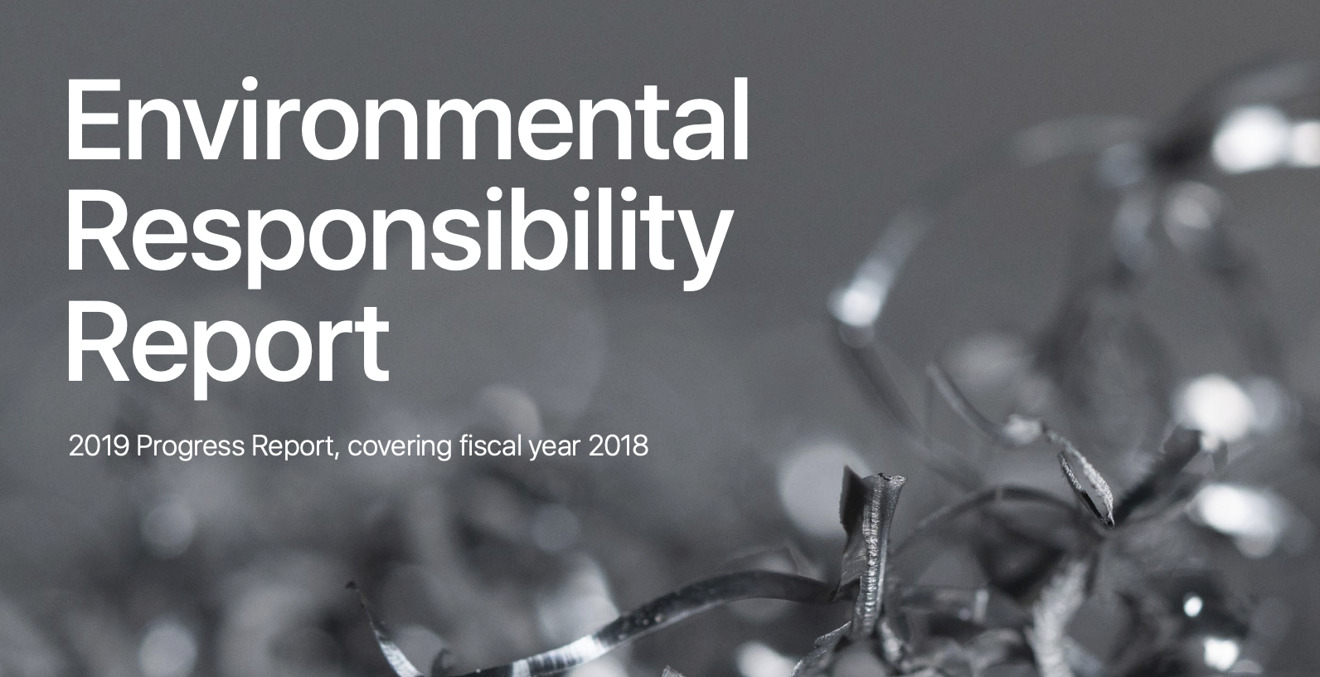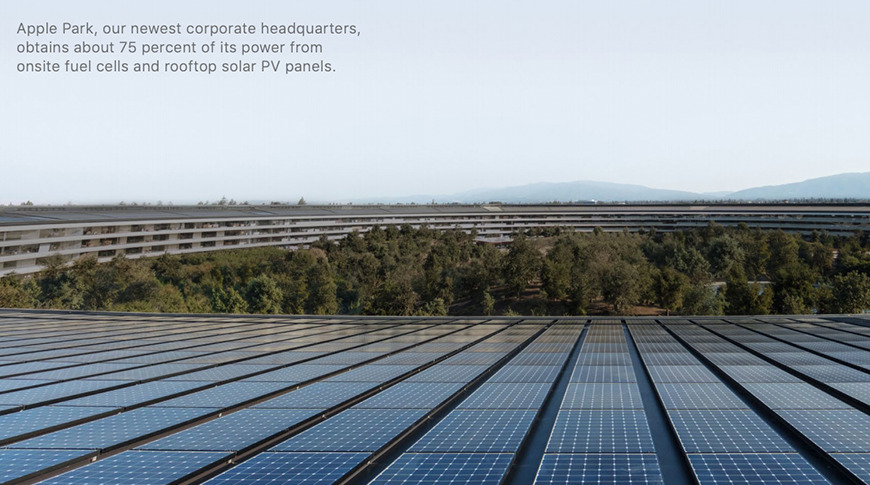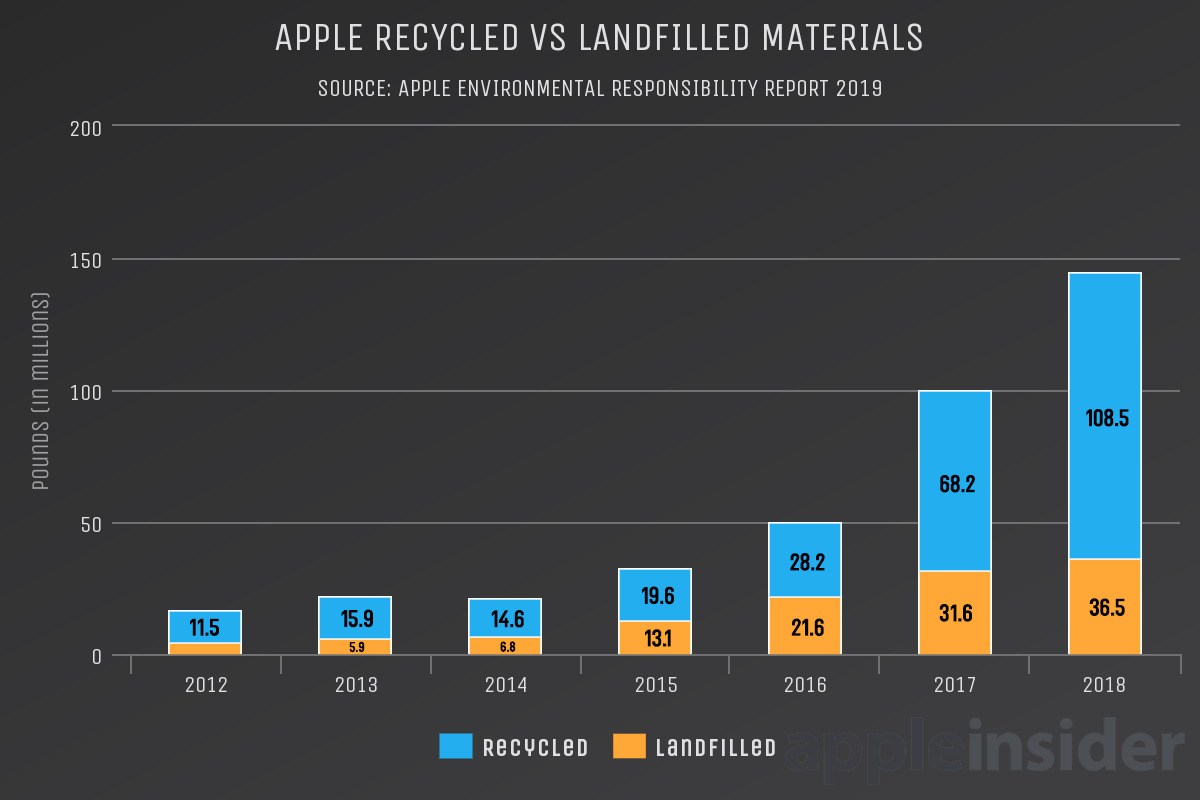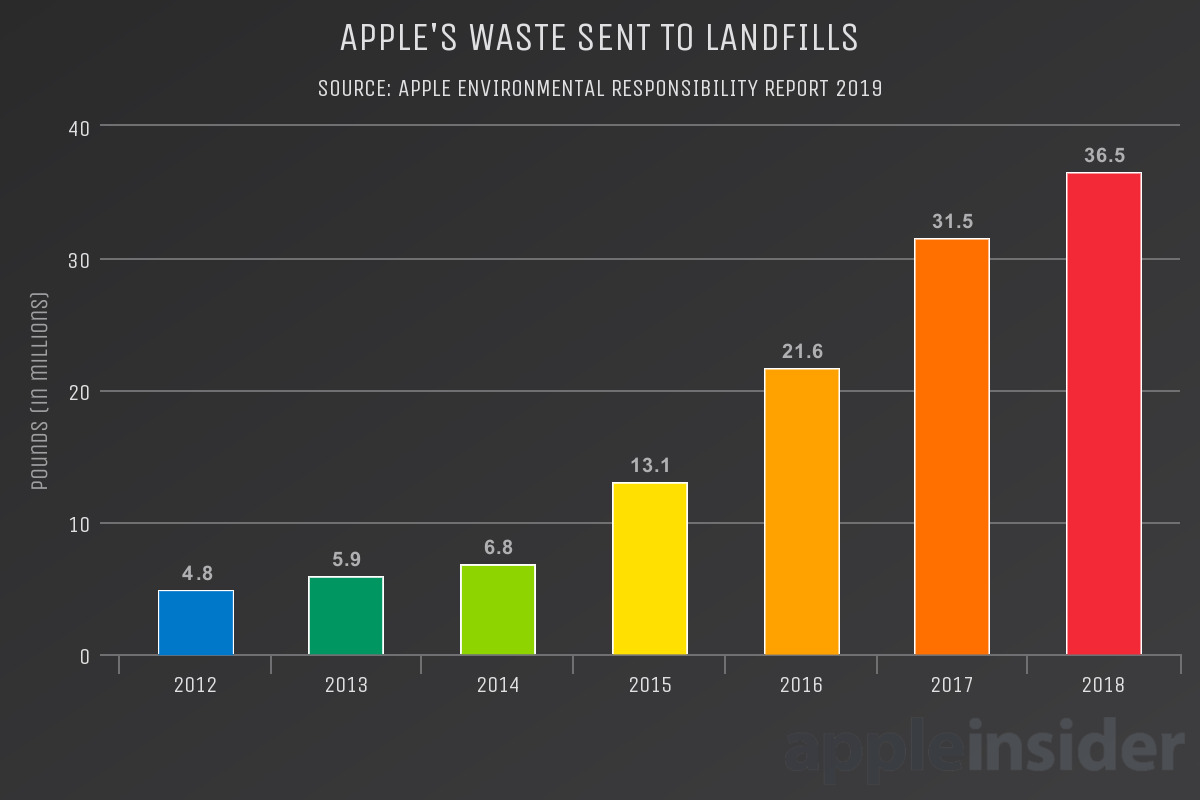The production of consumer electronics is damaging to the environment, and there's no real way around that. Apple has been striving to help offset the damage they're doing by adopting more environmentally sound practices, but how much does it help?
Apple released its last Environmental Responsibility Report in April of 2019, offering a glimpse into how the company is making strives to become environmentally friendly. The report shows some impressive figures, giving many Apple fans and environmental advocates hope for a brighter, more ecologically sound future.
But, there's a lot more behind the numbers and figures that Apple presents.
The inherent problems with mobile technology
Smartphones are endemic of a much larger problem. Apple is not even close to fully responsible for the damage that consumer electronics have done to the environment.
Apple consistently ranks highly among companies who are trying to mitigate the environmental damage that comes with manufacturing consumer electronics. In 2017, Greenpeace gave Apple a green electronics rating of B-, which is significantly higher than Huawei, who received a D, or Samsung, who received a D-.
The problem lies in the quantity of devices that are manufactured. More than 1.5 billion smartphones are expected to be produced every year, and only a portion of them will be an Apple product. For any real environmental damage to be reduced, all electronics producers will need to start adopting less damaging practices.
Environmentally smart, economically smarter
People are often quick to praise Apple for attempting to mitigate the damage done to the environment that comes with electronics manufacturing and running a trillion-dollar company. While praise is due, it's also worth knowing that there are a plethora of reasons why beating competitors to the environmentally-friendly punch is in Apple's best interests.
Early adopters of "green" practices, be it renewable sourcing of electric or switching to energy-efficient appliances or reducing manufacturing waste, are given financial incentives to do so. It's often far less expensive to be an early adopter of green practices than it is to be a company punished for eschewing them.
On top of that, it just looks better. When you can tell consumers that your product is less environmentally detrimental than your competitors, it makes you look like a smarter choice.
We live in an era where a lot of consumers want to be seen making smarter, more environmentally conscious choices. When Apple makes the choice to publicly disclose what efforts they've made toward reducing harm to the environment, Apple is telling consumers that, by extension, they are also doing less damage.
Whether or not this is a factual statement, however, is an entirely different issue. Prior to publication, we reached out to Apple to see if they had any more information on where they plan on taking their sustainability efforts in the future, but received no reply.
Plastic is so 2017
One of the things observant Apple fans may have noticed is that Apple has started phasing out plastic in their packaging. This started in 2018, when the iPhone 7, iPad Pro, and the 2018 iPad were shipped with fiber alternatives to the traditional plastic trays. In 2018 alone, nearly 218 million iPhones were sold, and nearly 218 million plastic trays didn't wind up in landfills.
That's enough plastic to fill the entire Mall of America to a depth of eight trays.
Carbon footprint reduction
What's one of the things that Apple can do that an average consumer can't? Make a meaningful transition to renewable energy resources. When the average consumer gets an electric bill, oftentimes there's an option for you to opt-in to receiving "renewable energy benefits."
Every electric company is a little different at this point, but they all work more or less the same: You check the box, you pay your electric bill, and part of that electric bill funds research and development projects for your area's renewable energy program.
As a general rule in the United States, household electricity is still primarily coming from fossil fuels — coal and natural gas. Globally, coal still produces 41% of the world's electric. This isn't likely to change any time soon, as it difficult — at least in the United States — to update infrastructure to incorporate things such as solar, wind, or hydroelectric. On top of that, a majority of U.S. citizens still oppose nuclear energy.
Apple, on the other hand, has a lot of money and resources. Apple can purchase land that they can build solar and wind farms on. Apple can install highly efficient solar panels on the roof of its corporate offices to help offset the need for fossil fuels.
In doing this, Apple has managed to source 99 percent of its electricity from renewable resources, preventing about 690,000 metric tons of carbon emissions from going into the environment. For comparison, in 2012, only 60 percent of their electric was sourced from renewable resources.
Waste is still waste
If we look at the data provided by Apple on their recycled versus landfilled materials, it gives the picture that Apple has removed a lot of potential waste from landfills. This is absolutely the correct takeaway from the data, but it also doesn't highlight a bigger problem — Apple is producing considerably more waste than they have been in past years.
In fact, in 2012, Apple sent just over 4.8 million pounds of waste to landfills. By 2015, that number rose to over 13 million pounds. In 2018, Apple had sent 36.5 million pounds — or 18,250 tons — of waste to landfills.
And that's just the waste that they could send to landfills. As the chart above shows, Apple's hazardous waste has nearly doubled from 2017 to 2018.
This primarily has to do with the fact that Apple just produces more devices these days. By producing more devices, they're ultimately going to produce more waste. For example, in 2018, Apple sold over 217 million iPhones, versus 125 million in 2012. Of course, this isn't everything Apple makes, but it is a good proxy.
It should also be noted that Apple had not been including their statistics for distribution center waste in their reports until 2017. This accounts for a large portion of their landfilled waste prior to that date as well.
Yes, Apple should be applauded for reducing the amount of waste that could have been sent to landfills. Ultimately, we should be willing to recognize that they're still producing many more times the waste they were producing seven years ago.
Even accounting for more complete reporting with the inclusion of distribution center waste, it's clear that Apple still has a lot of room for improvement in reducing hazardous and landfilled waste.
What's mined is mine, and what's recycled isn't mined
One of the most environmentally detrimental processes in electronics production is mining. Consumer electronics are responsible for a significant amount of mining. The electronics industry is the second-largest consumer of copper. That's nothing to say of rare earth minerals, which are used for things like Taptic engines in smartphones.
Mining not only disrupts ecological sites by requiring deforestation and habitat destruction, but it also renders that land susceptible to erosion, which isn't easy to reverse. Ores and minerals are also capable of leaching into soil and groundwater. This can and often does contaminate the water table near mining sites and render drinking water unsafe.
Runoff and mine waste can also create ecological dead zones in streams, rivers, and ponds near mining sites. These minerals and ores often show up in food chains, the same way seafood has become associated with an increased risk of mercury poisoning.
Apple has done quite a bit to reduce the need for mined materials where possible. The new Mac mini and new MacBooks now use 100 percent recycled aluminum enclosures.
And while it wasn't included in this year's Environmental Responsibility Report, Apple recently went public with the fact that they're going to obtain rare earth elements from recycled electronics. The iPhone 11 line features recycled rare earth in the Taptic Engine, so the effort is underway.
This is a long-term goal for Apple, as stated in the environmental report.
"We're on a mission to one day use only recycled and renewable materials in our products and packaging, and to eventually eliminate our reliance on mining altogether" - Apple Environmental Responsibility Report 2019, page 23
While recycling and using recycled elements will never completely eliminate the damage done by manufacturing, it does help mitigate it. Recycling elements when and where they can, especially in the production of consumer elements, is a critical step in environmentally sustainable practices.
Practical solutions to practical problems
Even with their best efforts, the manufacturing of electronics is inherently environmentally detrimental. Around 80% of the carbon emissions made caused by electronic devices are produced during the manufacturing process, according to Greenpeace.
The only real solution to lessening environmental impact in a substantial way is for a company to stop producing products at unsustainable rates.
There isn't a glut of Apple products sitting on shelves, forever unused. Given that Tim Cook fixed Apple's supply and demand problem, leading him to be crowned the CEO, the company does an excellent job with on-demand device fabrication, and this keeps surplus and unused stock to a minimum. But the fact still remains that the company has produced billions of devices in its lifetime, and each one of those has an environmental impact.
The practical solution is for consumers to simply purchase phones and computers more infrequently, because reusing the same phone for multiple years greatly reduces environmental impact in a chain of events that leads to the manufacturing company making fewer. From a consumer standpoint, it can be hard to pass on the newest features, especially when carriers let you switch phones as frequently as every two years.
 Amber Neely
Amber Neely











-m.jpg)






 Marko Zivkovic
Marko Zivkovic
 Christine McKee
Christine McKee
 Andrew Orr
Andrew Orr
 Andrew O'Hara
Andrew O'Hara
 William Gallagher
William Gallagher

 Mike Wuerthele
Mike Wuerthele
 Bon Adamson
Bon Adamson


-m.jpg)



42 Comments
Good read Amber. I was just going to skim it and keep it movin' but your more nuanced take made me read the whole thing. Too many times environmental articles end up being copy/paste marketing bullet points. Even though consumer electronics manufacturing will never be completely clean, Apple and companies like them doing all they can to lessen the impact... yeah, that's a good thing. You providing a better understanding of what that "lessening" is, is also a good thing.
The reality is it means nothing to all but a few people.
Something I've always wondered is all the electronics that are produced and never sell. Look at the amount of lithium battery packs that are made by hundreds of companies. Hell I get free ones at conferences just handed out to all the attendees. How many of these just go in the garbage. And the earth elements that are required to make those can never be replaced. And you think about these companies that make smartphones that have a fractional market share. How many thousands of these phones are made, with all their minerals and rare elements that go into manufacturing, and then they just sit on store shelves, eventually to just be trashed. At some point we're going to run out of these elements, right? At what point do we run out of lithium, cobalt, copper? And then where are we going to be? We're so reliant on this interconnected technology, but when the well runs dry it's going to be scary crazy.
Very well presented article that reminds that solving systemic problems, whether technical, social, environmental, financial, etc., requires system thinking. Unfortunately, as Jimh2 points out, even though nearly everything we deal with in life involves a system, very few people are able to see, much less understand, the system. This has nothing to do with human intelligence or collective consideration for system concerns, it's just very difficult (in both time, cost, and complexity) to describe and present these systems to the population at large in a meaningful way.
For those who "see" the system, they are often powerless to control it in a meaningful way, so they prescribe measures that chip away at the edges in some small way. Companies that care, like Apple, do chip away larger chunks than those who don't give a rip, while the rest of us chip in by stopping the use of plastic straws and bringing our own bags to the grocery store. Unfortunately we often have a hard timing seeing the impact of our measures on the system, and frequently our attempts at resolving an issue in one area, e.g., electric vehicles, simply move the problem somewhere else in the system, e.g., electric power generation. All systems are subject to the theory of constraints, so it's a never ending battle to deal with the part of the system that's the current constraint. But we have to keep trying.
Thank you for shining a little light on some of the environmental impacts of the consumer electronics lifecycle.
“Smartphones are endemic of a much larger problem.”
I’ll make a few points.
First, thank goodness the smartphone exists. Consider all the products it replaces. How much water and natural resources were used in the production of the thousands of different models of clock radios over the years, before the alarm clock function of a smartphone made that product category obsolete. Clock radios were big and bulky compared to smartphones, requiring even more fuel to deliver them to market and taking up more space in landfills. Okay, you might not have replaced your clock radio every two or three years, but as a kid I recall I owned my own, my two brothers had theirs and my parents had one in their bedroom. That’s four in my household growing up, and it was a requested Christmas gift to get an updated model. But maybe we kept them on average four or five years. But add in portable transitor radios, walkie talkies, albums, then cassettes, then CDs and mini discs, Sony Walkman players, aftermarket car radios (which still exist but are far less commonly swapped out in the age of Bluetooth connection to the music collections on our smartphones). Add in stand alone cameras, initially with film cartridges, which we burned gas to go buy and to go drop off at the local photomat. Then digital cameras, and the upgrade treadmill associated with those. Video recorders, landline phones, then early wireless home phones, then clunky cellular mobile phones. Most all the above products were more voluminous than a smartphone, and in aggregate were produced in far larger numbers since a lot of people owned many of these products. So smartphones have been an environmental godsend relative to the world we lived in previously.
Second point, thank goodness for Apple, as the company has long resisted simply adding a bigger battery to each iPhone, instead opting to improve the iPhone’s compute efficiency with each new model. I would love to see Apple come up with a test procedure that shows the compute efficiency of iPhones versus the competition; each phone does the exact same tasks, in the same apps, and compare the overall energy utilized. My guess is that iPhones would compare favorably, and that means fewer coal-fired power plants constructed because the iPhone exists and few less spent lithium.
Third, everything mentioned in this article. It’s just too bad we aren’t more often reminded about the two points above as I think they are the more significant points to be made.